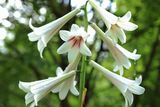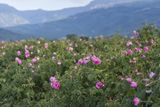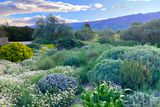Withered stems reveal a special kind of beauty
SEED HEADS: Stark beauty
People of a tidy turn of mind have a tendency to whip away every flower that has dropped its petals. This is called dead-heading and it can take up a lot of time, because, once begun, it soon becomes a necessity and there are endless numbers of flowers to be dead-headed.
Often the next step, after dead-heading the flowers themselves, is to take out entire flower stems, and perhaps the whole top of a flowering plant as it begins to wither in autumn and early winter. Years ago, the standard advice for the care of herbaceous plants was to cut away all the flower stems, seed-heads and leaves as soon as they began to wither back in October or November. The cut stems were carted away to the compost to rot down and be brought back as compost.
While this approach certainly achieved neatness, in the form of a series of clumps and tufts of cut-off shoots, it created a sterile rigidity that ignored an entire realm of great beauty, namely the statuesque shapes of withered seed-heads. These are especially appealing in winter, when the stems and seed-heads are covered with hoar frost, a transitory beauty that only lasts a few hours until the frost melts, but is repeated many times each winter and, even when not frosted, withered stems can look great.
There is so little ornament in the garden in winter that it seems a waste not to make the most of this aspect of the natural cycle of plant growth. It has to be admitted that not all perennial flowers look great when dying back or withered. Some, such as lupins, hostas and delphiniums, which have soft stems, simply fall into mush. These can be tidied away if desired or they can be left to rot down.
Some perennials have rigid stems when withered, such as monarda, eryngium and phlomis, and these are very persistent, drying out to leave stiff woody stems that stand up to most winter winds and gales. Russian sage makes a fine show of stiff stems from a woody base. Many grasses are very pretty in winter, such as stipa and miscanthus, the show lasting well into early spring when the leaf bases rot and the old leaves can be tugged away. Cutting these back in early winter is an opportunity lost.
If you have been in the habit of over-tidying, maybe stay your hand this year and leave at least some of the withered seed-heads in place. Look at them on a frosty morning and see if they do not add an extra dimension to the year's cycle of natural beauty.
Join the Irish Independent WhatsApp channel
Stay up to date with all the latest news














